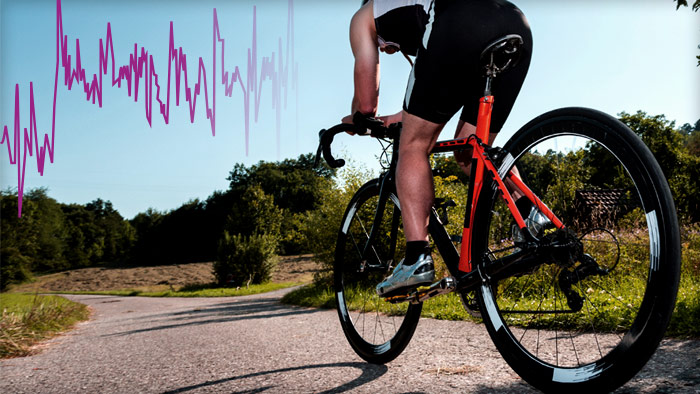For cyclists entering into their late base training phases, increasing muscular endurance and strength on the bike needs to become a greater focus. The greater your muscle endurance, the less fatigue you will experience towards the end of a long race and the more intensity you can handle while training. Early season base training is a good conditioning phase with increasing volume and a mix of lower to moderate intensity days. As you transition to late base season training, incorporating more moderate intensity days, while challenging yourself with power, will help you target specific aerobic adaptations and lead to greater aerobic leg strength and muscular endurance.
Monitoring Your Effort
Using a power meter can play a crucial role in monitoring your effort as accurately as possible. Having power allows you to maintain a steadier effort for a longer period of time compared to using heart rate alone. Heart rate is a great tool but a steady heart rate can hide increases and decreases in speed and power, resulting in a less than steady effort. No effort is going to be perfectly steady, but with power you can limit the fluctuations. This allows you to target specific energy demands while placing a greater amount of aerobic stress on the muscle compared to using heart rate alone. Used in conjunction with one another, power and heart rate can provide you with valuable information.
Incorporating Zone 3 Efforts
Incorporating more days focused on longer zone 3 and 4 efforts are key to building muscle endurance and power as you train into your late base building phases (A. Coggan’s zones). Zone 3 efforts are especially effective when used on long endurance rides. Working durations of 10 to 30 minutes allows you to place a large amount of stress on the muscles aerobically. Challenge yourself to work the upper end of the zone with both power and heart rate. It takes greater concentration to maintain this effort but it will lead to gains in power in this range, which will represent gains in muscle endurance. When training outdoors, your terrain will dictate how steady you can be and for how long, so it is best to work these efforts on a continuous grade or uninterrupted flats. Not sure of your power or heart rate zones? Click here to learn more about field tests you can perform to set your zones accurately.
While maintaining a steady wattage output is great for helping you maximize your potential for each effort, knowing that you’re working aerobically is just as important. So feedback from your breathing, perceived exertion and heart rate is still important. Keeping a deep breath while working these efforts lets you know you are still working aerobically. If heart rate drifts high but breath remains deep, then stick with the power for your effort. If heart rate will not elevate into zone 3 and you’re experiencing a high perceived exertion, then whether or not you can hit the power ranges for the day you may be experiencing a greater amount of fatigue. This is when it may be wise to back off for the day and skip the efforts.
Since the efforts are not too intense, you can recover quickly from each effort and each day allowing you to work a larger quantity of this training through your late base periods. Some of the key adaptations made while working efforts in these ranges are increases in muscle glycogen storage, aerobic conversion of fast twitch fibers and an increase in mitochondrial enzyme activity. All of these adaptations are important factors in building increased muscle endurance and strength1,2.
A Well Executed Workout
Below is a great example of a zone 3 workout from a Category 1 elite athlete working through the mid to late base season in 2013. The goal for this workout was to work steady 10 minute efforts in the top end of zone 3, working with as much power as possible while keeping breathing deep and, if possible, HR in the same zone. Recovery time was 10 minutes of easier spinning in zone 2 between each interval. His power crept into the zone 4 ranges for this workout, but since his breath was deep and heart rate was stable, we stuck with the power for the day.

It is important to note that a mix of training intensity is needed throughout any training period. While important aerobic adaptations are made in all training zones, the ability to work long durations in zone 3 and even into zone 4 ranges- repeatedly- make these intensities important to focus on during the late base building period.
References
Wibom, R. et al. (1992, November). Adaptation of mitochondrial ATP production in human skeletal muscle to endurance training and detraining. Retrieved from https://pubmed.ncbi.nlm.nih.gov/1474078/










